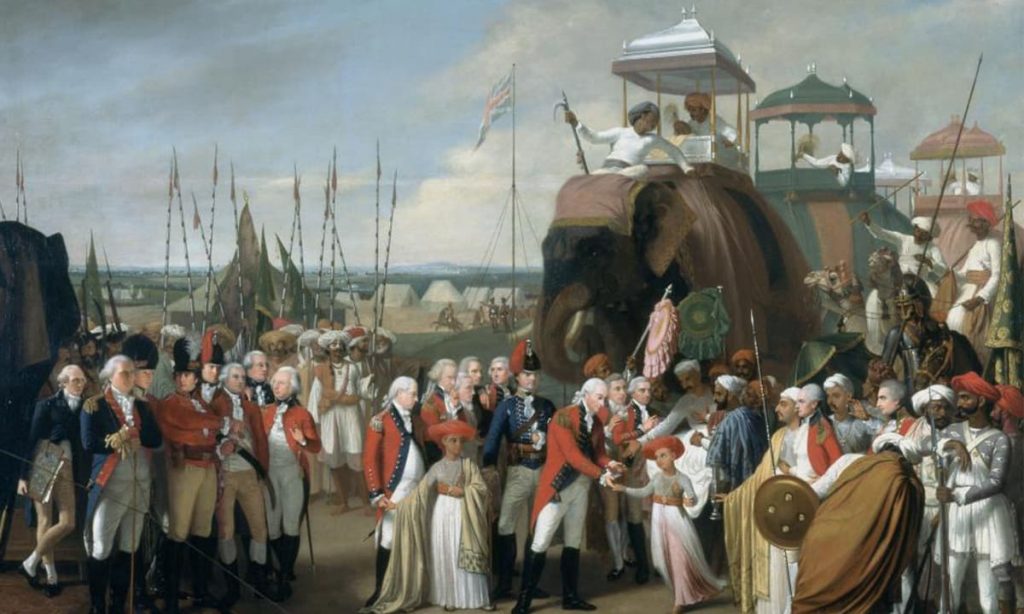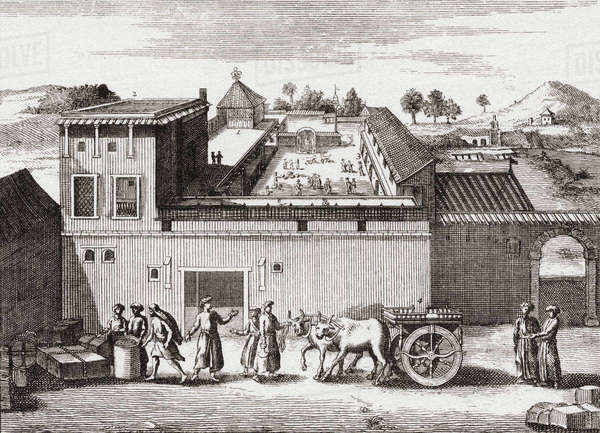
Historians suggest that the first known cricket on Indian soil was played three hundred years ago this year. Were Indians playing? Quite possibly. Were players from Kent playing? Very probably, but unfortunately, we cannot be certain. This is the story.
An engaging but rather unreliable Midshipman named Clement Downing wrote a book called A History of the Indian Wars, originally published in 1737, the year after Downing died. In it he tells us only that on a riverbank off the Gulf of Cambay (now known as the Gulf of Khambhat, just north of Bombay – now Mumbai), marines from two East India Company coastal craft diverted themselves for near on a fortnight with “cricket and other exercises”. The shipping records confirm this to be in December 1721.
The ships were moored at the centre of the most productive cotton-growing and manufacturing district on India’s west coast. The calicoes they were loading for transhipment had become such a fashion in England that London weavers began rioting and in 1721 the Calico Act was passed by Parliament banning the importing of calico.
The times were extremely violent on land and sea. The British were quite literally all at sea off the west coast of India. The East India Company was clinging precariously on to pestilential Bombay as the big powers in the land, the Mughals and the Marathas, took turns making life hard for the foreign intruders at the premier port of Surat.
Facing three different enemies out in the Gulf of Cambay, quite apart from the shiftiest of sandbanks and an unmanageable spring tide into silted-up Cambay, Downing tells us that the two coastal craft had taken shelter up the Dhadhar River, knowing that there too they are liable to raids from an indigenous local people, the Kolis (no relation to Virat Kohli, we think).
We can estimate that onshore there were some 50 Indians present and about 20 Europeans, by no means all English. The proportion of Europeans had been increased by the secondment of 12 marines off an East Indiaman docked in Bombay, the London.
The London had sailed from Gravesend the previous year, at a time when East Indiamen routinely weighed anchor in the Downs to make up crews, mostly pressed. It’s a pound to a penny it was Kentish Men and Men of Kent off this ship who gave India its first known taste of cricket.
This was the first Golden Age of Kent Cricket. The game had been born on the Weald and played on the North and South Downs for more than a century, noticed only when players were brought before the courts for rowdy behaviour. Now, still lawless but being taken up by the gentry to wager on matches, it is the Kentish folk, we are told in 1723, who were the most renowned for cricket of all the people of England, Dartford (neighbouring Gravesend) the most excellent.
All the people of England? As yet, the game was probably known only in the counties adjacent to Kent. Even in Essex in 1726 it was still possible for a magistrate to stop a match as conducive to riot. Our Kent marines in India (perhaps only several of the twelve) would almost certainly have had to teach the game to everyone else, Europeans and Indians alike.
What gear was used we don’t know. It seems unlikely the men off the London brought it from Bombay, even if they had managed to bring it from Kent. A handy ship’s carpenter could have quickly shaped the tapering bats and low-lying stumps of the time from mango or other wood on the shore, if not from his timber supply on board. A cork and leather ball seems unlikely but some composition involving wood and tar, if not cotton and sailcloth, is a possibility.
Cricket was included among other exercises – as it was also at Meopham Fair and in Sackville’s Knole. For the military, cricket was as much a matter of drill as recreation. On the Dhadhar the marines were expecting an attack. A defensive ring was thrown round their exercises, an exhibition intended to deter interference.

The exercises on this occasion did more than deter. They evidently fascinated. May we suppose the cricket especially did so, with its peculiar ritual not unlike a mock battle? We are told that large numbers of local people came down on several occasions to watch. In an atmosphere otherwise one of perpetual warfare, the fortnight’s cricketing was a haven of peace.
The marines were so encouraged by this unexpected turn of events, they eventually made an expedition to a Koli settlement two or three miles away in search of provisions. Whether they were looking for Christmas dinner or just a change from kedgeree, they bought two bullocks, two sheep and a dozen fowls, besides flour and butter.
It was only as the foraging party was leaving that several of the Kolis flourished their swords somewhat threateningly. The ship’s party interpreter sensibly took this as a sign they needed to leave quickly. However, in this tercentenary year, perhaps we may be forgiven for imagining that these Kolis cutting and sweeping were not being belligerent, but on the other hand practising the batting they had been observing so keenly on previous days?
On the return leg of its next voyage up the Gulf, the bigger boat of the two coastal craft blew up and sank in a naval battle near Bombay and many of those who had learned how to play cricket at Christmas lost their lives. The Kent cricketers, if so they were, were more fortunate. Back on the London by the end of December, they set sail for Blighty early in the New Year.
It took many more decades before cricket became firmly established within the sub-continent, but three hundred years on we can see clearly how the pupils have outstripped their teachers.
0 Comments